
1. Measure out all of your ingredients before you start anything.
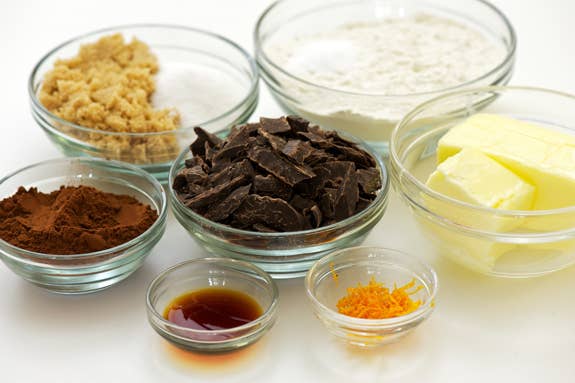
Read the recipe closely, from start to finish. Make sure you have everything and enough time. Baking is finicky; you don't want to start and have to run to the store to pick up some while your already-beaten eggs fall flat. Also: Use real butter.
2. Don't scoop flour out of the bag with the measuring cup.
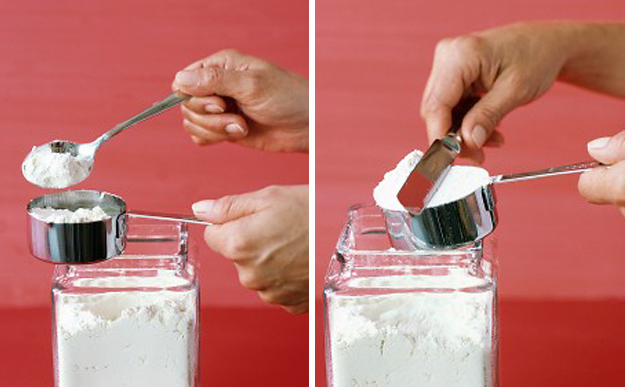
Spoon flour into the measuring cup until it's piled above the rim, then level it off with the back of a knife or another flat surface. If you dip the measuring cup into the bag of flour, you'll end up with more flour than you should have. Little side note here is that some recipe developers and food magazines prefer the scoop method to the spoon method — there is no industry standard, which is annoying. But if your source isn't explicit, it's usually safer to spoon not scoop. For wet ingredients use a liquid measuring cup.
3. Let the ingredients come to room temperature before you use them.

This is especially important for the eggs and butter so that they incorporate evenly. My Baking Addiction has some good tips about how to bring butter and eggs to room temperature.
4. But don't let butter become too soft / warm.
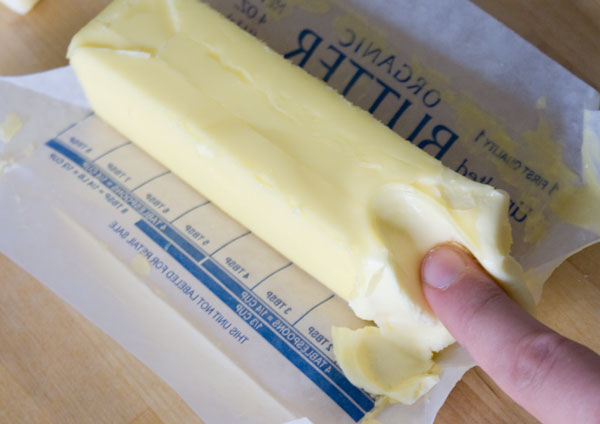
Warm, melty butter = cookies that are spread out too much and lose their shape. More on this later.
5. Know what your ingredients "do" so you get the texture you want.
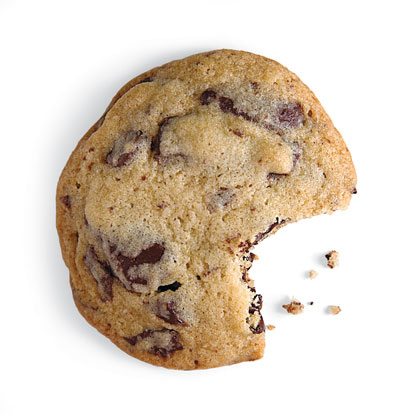
Sugar
More sugar — and an absense of acidic ingredient like lemon juice or buttermilk (and limited eggs, water, and a milk) — makes for thin, crispy cookies. This is partly because sugar melts in the oven and helps cookies spread.
Brown sugar
Brown sugar absorbs moisture so it makes cookies chewier. If you like chewy cookies, you can use brown sugar in place of some or all of the white sugar. You could also underbake them a minute or two.
Eggs
More eggs make for cakey cookies. The whites help them puff up and dry, the yolks make them taste rich. If you like crispy cookies, use egg whites in place of some of the whole eggs.
Baking soda
It reacts very quickly with acidic ingredients (like brown sugar) and makes gas bubbles, which then cause the cookies to rise. It causes a loose, open crumb and a craggy top.
Baking powder
This leavening agent works slower than baking soda, causing a more even rise with a smooth top and a fine, tight crumb.
6. Use the right size eggs.

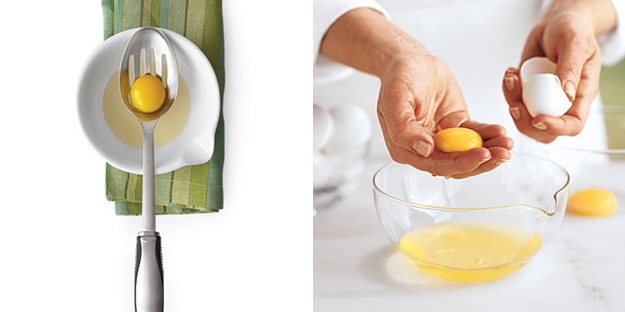
A good recipe will tell you which size to use. When in doubt, use fresh large white or brown eggs. They should be at room temperature. Cold eggs separate best, but after you separate them, bring them to room temperature so they will blend better with other ingredients. If your recipe asks you to separate the eggs, use your hands or a slotted spoon.
7. Use fresh baking soda/baking powder.
Test your baking powder and soda if you think it might be old: Baking soda should bubble when added to vinegar; baking powder should bubble when added to hot water.
8. Put any nuts through a sifter.

Shaking nuts in a sieve or sifter will get rid of dust and tiny pieces that might discolor the dough.
9. Don't overcream the butter and sugar.
For cookies, you should only cream the butter and sugar for 1 to 2 minutes. The mixture should be smooth, but unlike cakes, you don't want to lighten the color during creaming. Never use a setting above medium or you'll heat up the butter. As baking expert David Lebovitz explains, "When you beat butter and sugar, those little crystals of sugar create air pockets between the butterfat. The more you beat, the more air you incorporate (those trapped air pockets steam open and expand in the oven). That’s great for a nice, light cake…but not for most cookies. So when the recipe says, 'Cream or beat butter and sugar,' just mix them for about 30 seconds, until well-combined."
10. Don't overmix the dry ingredients.
When you add the dry ingredients to the wet ones, you only need to mix until they are just combined. Otherwise you will overdevelop the gluten in the flour and the cookies won't have the best texture.
11. Chill cookie dough for at least 30 minutes...
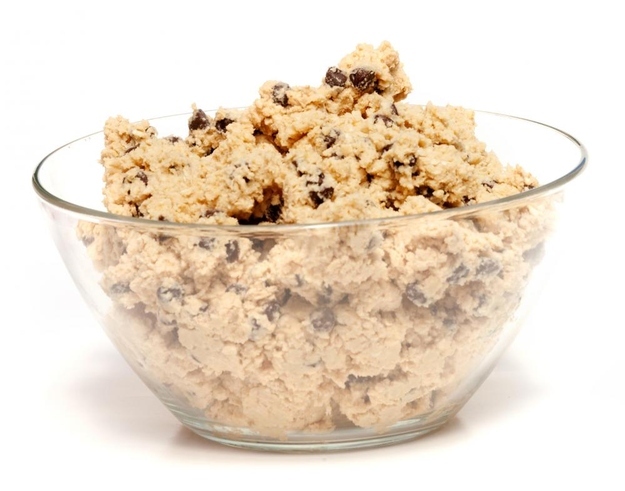
Try not to put warm, melty dough in the oven — the cookies will quickly spread and lose their shape. (This is especially the case if the dough has butter in it because butter has such a low melting point.) Letting the dough rest in the fridge will also help relax the gluten, ensuring your cookies will turn out soft, not rubbery. Keep in mind that this is only a good idea if the dough uses baking powder as a leavening agent; baking soda starts to lose power as soon as it is combined with wet ingredients.
...and up to 2 days before baking.
In his quest for the perfect chocolate chip cookie recipe, New York Times writer David Leite held a blind taste test of three different batches: one that had rested 12 hours, one that had rested 24 hours, and another that had rested for 36 hours. The 36-hour cookie won hands down. Leite gets an explanation from to kitchen science expert/cookbook author Shirley Corriher who says "rest time lets the dough and other ingredients fully soak up the liquid — in this case, the eggs — in order to get a drier and firmer dough, which bakes to a better consistency.”
12. The chilling part is important, even for Slice and Bakes.
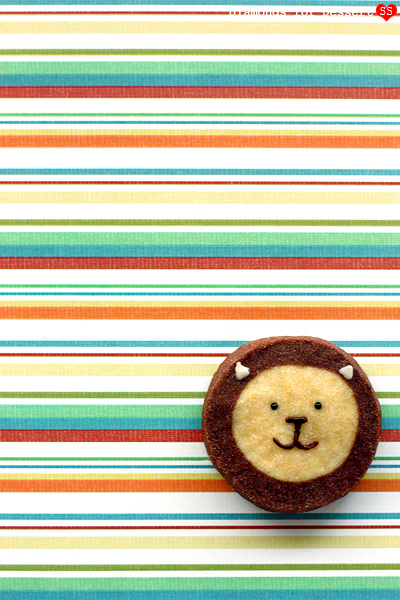

To make slice and bakes — also called icebox cookies — you shape the dough into logs, refrigerate or freeze the logs and then slice it into cookies to bake it. A couple things you can do here to make them better:
1. Roll your log inside of a piece of parchment paper or wax paper to smooth it out. Tap the ends on the counter to make them flat.
2. Slice and bakes need some time to chill before you cut into them or they won't hold their shape. Put the log in the fridge for at least 3 hours, or in the freezer for half that time. Let it soften a little coming out of the freezer (but not the fridge) or it may crumble
3. Remember to rotate the log of dough often as you slice the cookies so that one side doesn't become flat.
13. Portion cookies evenly ...

Cookie scoops are fun for a devout baker.
...and bake cookies of a uniform shape and size in the same batches.
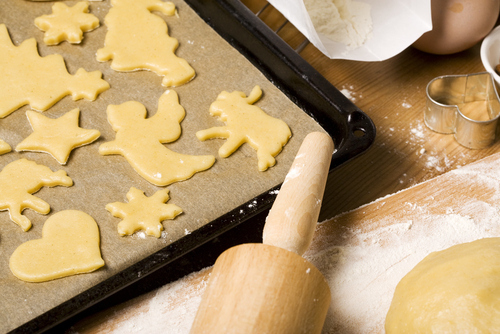
This will ensure that they bake at the same rate. There are a couple ways you can accomplish this, depending on the kind of dough you are working with: Use a teaspoon or ice cream scoop to measure out cookie dough, use a piping bag for better control, or use similarly sized cookie cutters in any shape.
14. Preheat the oven and check the temperature.
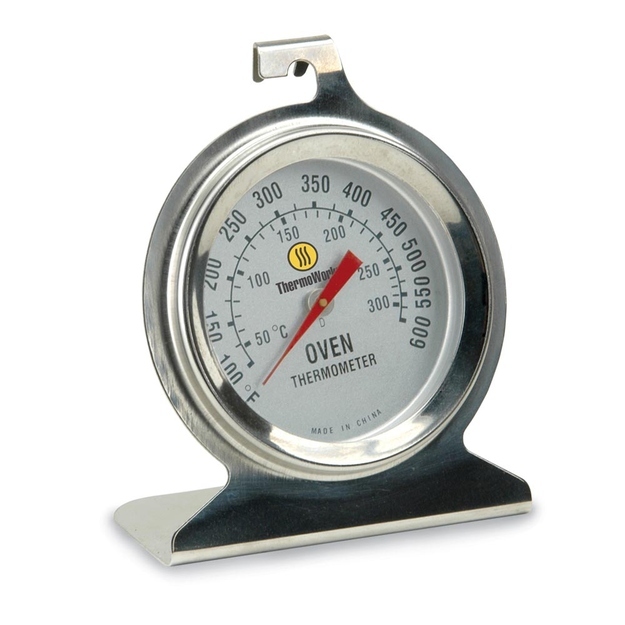
In baking, a recipe may not turn out right if your oven doesn't hit the right temperature. You should preheat your oven for 10-15 minutes with an oven thermometer inside of it then make sure it is the temperature it says it is.
15. Use a decent baking sheet, and own more than one.
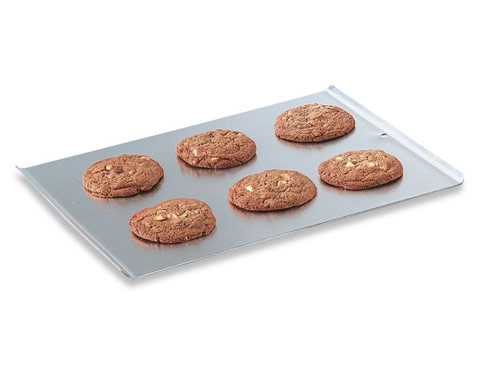
Thin baking sheets tend to have hot spots, and can warp and bend over time. Pick up 2-3 light-colored, heavy-duty aluminum baking sheets. (Dark cookie sheets tend to cause the cookie bottoms to brown too quickly.) Vollrath is the best brand. If you can, get one that has rims only on two sides so you can slide cookies off onto a baking sheet more easily. Like this one.
Why own more than one? If you are making multiple batches of cookies you don't want to put yourself in a position where you need to use a baking sheet before it or the cookies that are on it have cooled. That would mess up both the batch that just came out of the oven and the new one headed in.
16. Line the baking sheet.
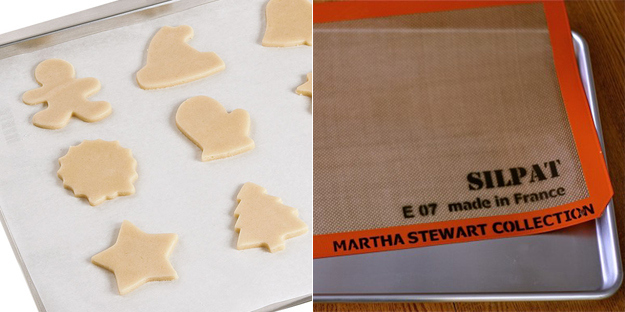
You can use either parchment paper or a silicone baking mat, and you don't even need to grease the sheet! This is a way better idea than greasing with butter or spraying the sheet with cooking oil.
1. Grease can make your cookies spread and lose their shape.
2. Lining the sheet make sit easier to take the cookies off and put them on a baking rack to cool, which makes for the best texture.
3. Easier cleanup because you don't have to scrub cookie stuff and grease off of your baking sheet.
17. When rolling out dough, work in small batches.
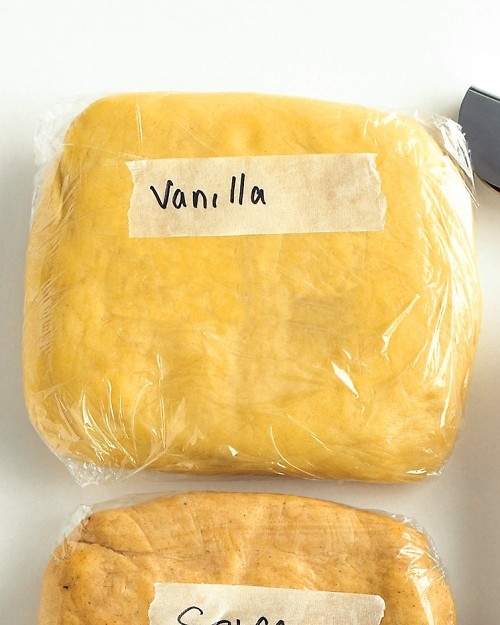
Rolled cookie dough should be stiff and it's best to work with a small amount of dough at a time so it doesn't heat up. Keep the other portion of the dough in the refrigerator.
18. Roll out dough between sheets of parchment paper.
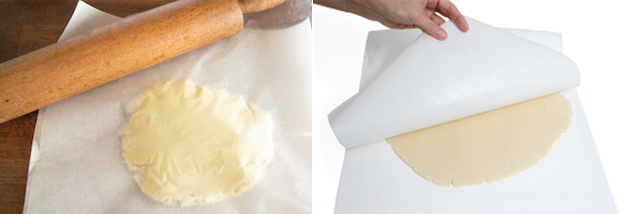
The more you handle the dough the more it will warm up. To keep it from sticking to the counter and the rolling pin, roll it between two large pieces of parchment paper. This way you can also transfer cut-out cookies to a baking sheet on the parchment, without peeling them off of the counter, which could distort their shape.
19. For dough of an even thickness, use rolling pin guides.
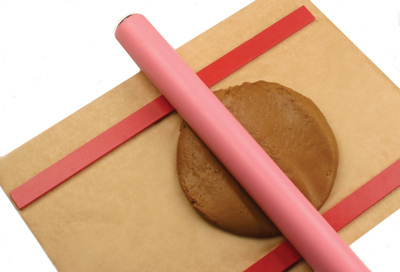
They're pretty neat! A perfectionist's dream.
20. Dip cookie cutters in flour before cutting.

This will give you a cleaner, more defined edge and will help keep the cookies from sticking in the cutter.
21. Chill the cut shapes in the fridge.

This will help them keep their shape.
22. Rotate cookies during baking.
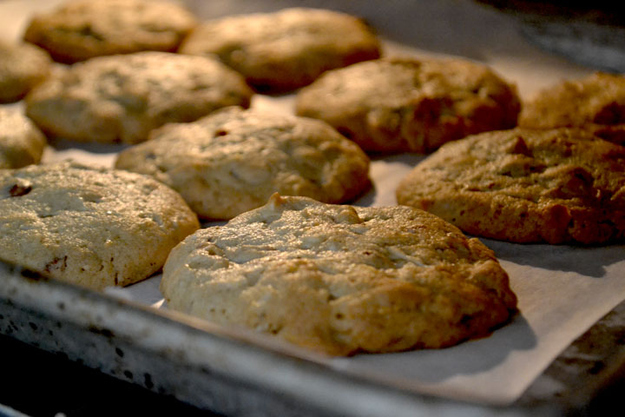
Practically all cookies should be slightly under baked. Take them from the oven while still a little soft, they’ll continue to bake as long as they are in contact with the hot pan.
23. Brush cookies with water before adding sprinkles.
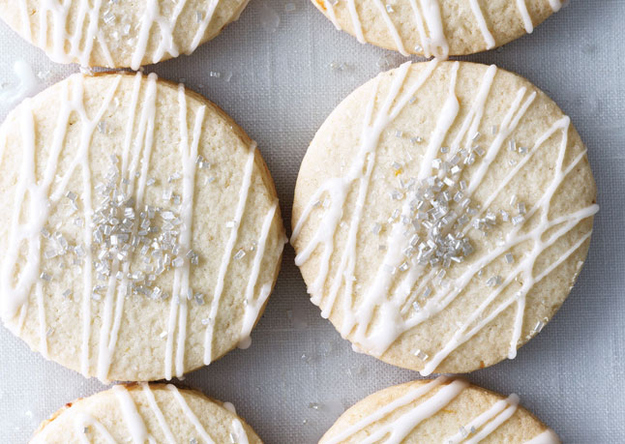
This will keep the sprinkles or sparkles from falling off. Some recipes tell you to use egg white, but Cooks Illustrated found that water works just as well.
24. Use a Microplane to rescue burnt cookie bottoms.
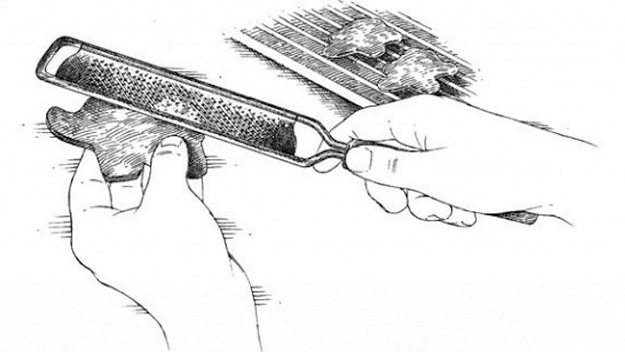
Scrape off the brown.
25. Store them well.

Don't store different varieties of cookies together — it can affect the texture. Be sure to use an airtight container. Soft cookies will best keep their texture if you store them with a piece of soft bread, or you could put layers of flour tortillas and parchment between the layers of cookies. See more good tips on Martha Stewart.

